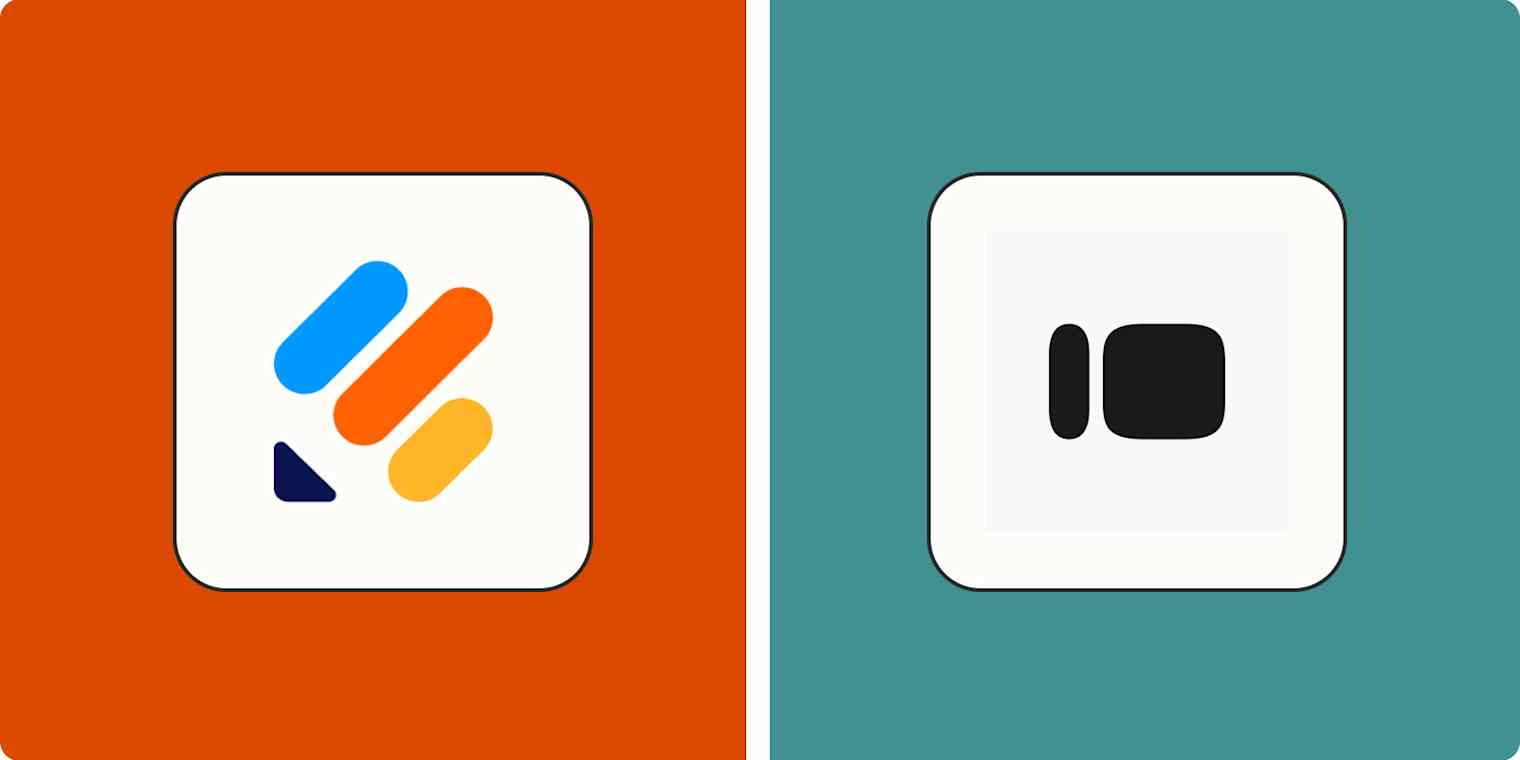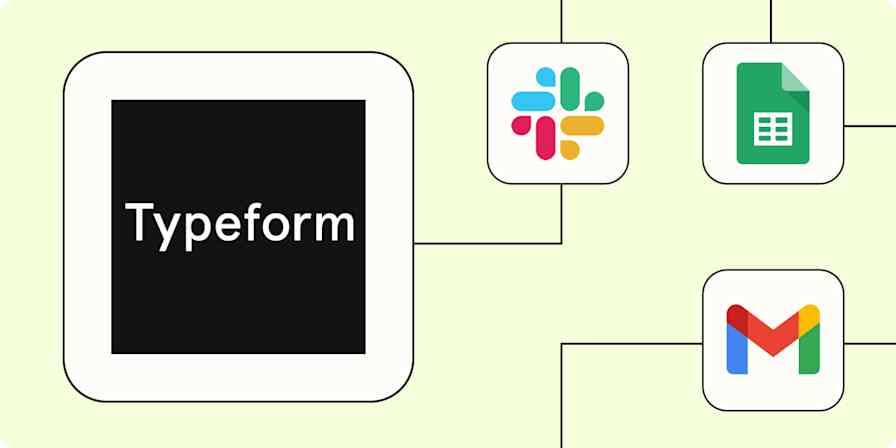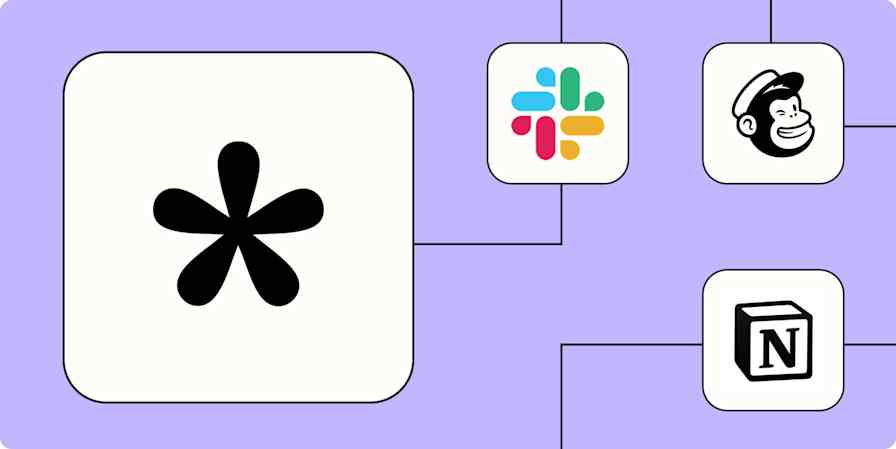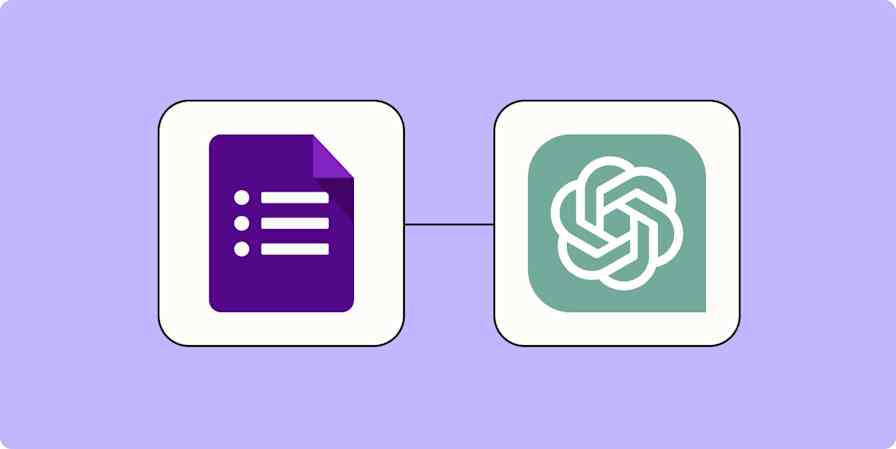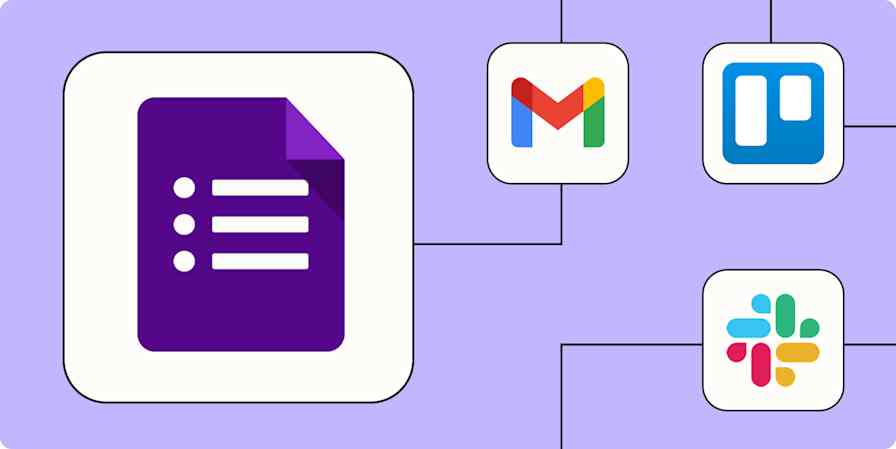Back when I was scrolling through my first website in the mid-'90s—I'm almost certain it was SpaceJam.com—web forms were still in their nascent stage. Websites were treated more as one-way communication devices, like newspapers.
Forms changed all that. At first, forms were clunky HTML elements that you had to pinch-and-zoom to interact with on small screens. Eventually, Jotform, Typeform, and other online form builders came along to improve the user experience and boost conversions.
Jotform and Typeform are both heavy hitters, and if you're deciding between the two, this article is for you. I recently tested both tools and compared them head to head. Here, I'll help you navigate which option makes sense for you.
Table of contents:
Jotform has a better free plan, but Typeform offers more on its paid plans
Both apps will integrate with your tech stack, natively and with Zapier
Jotform vs. Typeform at a glance
Here's a breakdown of the difference between these two form tools:
Typeform us best if you value a sleek interface (for you and your respondents) and want conversational-style forms. While it isn't the cheapest option, it's less restrictive with its features, and its AI capabilities and visual form design make form building and analysis easier than ever.
Jotform is best if you're looking for an all-in-one tool that includes a traditional form builder. It's incredibly flexible, and its analytics are really powerful. And since Jotform includes a suite of other apps—like Jotform Boards and Jotform AI Agents—it offers serious value if you're looking for an all-in-one solution.
| Jotform | Typeform |
|---|---|---|
Design | ⭐⭐⭐ Jotform's interface is less polished than Typeform's across the board, though it has a wider range of templates. | ⭐⭐⭐⭐⭐ An elegant form interface that works well on every device, plus thousands of creative templates. |
Ease of use | ⭐⭐⭐⭐ Designing forms is straightforward, but it's a bit less streamlined than Typeform. However, the new AI form builder makes things easier. | ⭐⭐⭐⭐⭐ Typeform's AI-powered form designer makes it incredibly simple to create beautiful forms. |
Advanced features | ⭐⭐⭐⭐ Jotform's pre-filled answers feature can boost engagement rates; tight integration with Jotform's other products (like Jotform Tables and Jotform Boards) opens the door to time-saving workflows. | ⭐⭐⭐⭐ Visual builder makes it easier to use conditional logic; you can also segment high-quality leads automatically and make your forms more relatable with video questions and video answers. |
AI | ⭐⭐⭐⭐ Jotform now offers an AI form builder. Even more impressive are its AI agents, which can be customized and trained to act as digital reps across multiple platforms. | ⭐⭐⭐⭐⭐ Powerful features include an AI form builder, Smart Insights, and AI-powered follow-up questions. You can also interact with your data using Ask AI. |
Pricing | ⭐⭐⭐⭐ Jotform has a generous free plan offering 100 submissions per month, and its paid plans—starting at $39/month—are competitive. But the pricing structure is overly complicated: there are caps on everything from form views to the number of fields per form. | ⭐⭐⭐⭐ Typeform's free plan only allows 10 responses, but its paid plans (starting at $29/month) offer unlimited forms, unlimited fields, and fewer caps overall. It's also more economical for teams—though for advanced teams features, you'll pay $199/month or more. |
Analytics | ⭐⭐⭐⭐⭐ Enough analytics data to help you improve engagement rates, plus the ability to generate beautifully-presented reports based on your data. | ⭐⭐⭐⭐ If you upgrade to the Growth plan, you get access to impressive AI analytics features. But most users get basic analytics that summarize survey results—and not much else. |
Integrations | ⭐⭐⭐⭐⭐ 550+ integrations; integrates with thousands more apps via Zapier. | ⭐⭐⭐⭐⭐ 300+ integrations; integrates with thousands more apps via Zapier. |
Typeform is prettier—for you and your respondents
In a contest of aesthetics, there's no question about it: Typeform wins hands-down. Everything from its homepage to its survey pop-ups are beautiful to look at.

Jotform's aesthetic, by contrast, is dominated by bright colors and cartoonish graphics. It's focused more on functionality than sleek visuals.

Does design really matter for forms? While it's hard to quantify, your forms are certainly an extension of your brand experience.
If you're using Typeform, you can take advantage of its brand kit feature (available on Plus plans and above) to keep your brand colors consistent across all the forms you create. This is especially helpful for brands juggling multiple team members and multiple forms.
Your users' main exposure to the respective design philosophies of Typeform and Jotform will be through form designs. Here's what one of Typeform's templates looks like—complete with eye-catching images and typography.

Jotform's templates have a simpler design and less built-in personality. That said, there are quite a few of them: Jotform has 10,000+ templates, while Typeform has around 3,000.

Apart from the aesthetic differences between Typeform and Jotform, something else you'll notice is that Typeform defaults to a "one question per page" style of form.

According to Typeform, this conversational style makes online forms feel more human and boosts engagement, especially on mobile. Typeform recently added multi-question pages as an option, but unless you actively seek them out, the default is still one question per page.
While Jotform offers Typeform-style conversational forms, it specializes in traditional full-page forms, which tend to be standard in settings like non-profits, health care clinics, law firms, and government agencies. If your primary use case involves full page forms (like the below), Jotform is a better option.

Both apps make it easy to create forms in seconds
To put Jotform and Typeform to the test, I created sample surveys for a fictional meditation app. The goal: ask my (also fictional) audience what features they want.
Starting a new form in Typeform is easy enough, but I quickly ran into a snag. Typeform's templates aren't accessible from within the web app. Instead, you need to leave the web app, go to the templates section of typeform.com and then import a template from there. This struck me as an odd choice for what's otherwise a smooth experience.
Despite the thousands of templates Jotform and Typeform offer, it's hard to find one that's so precisely tailored to your situation that it actually saves you time. I looked high and low for a template to use for my meditation app survey, but there was nothing that could be quickly modified into the kind of survey I needed. In the end, I decided that starting from scratch was my best bet.
Fortunately, Jotform and Typeform both offer AI form creation tools. All you need to do is describe the form you want to create, and the app does the rest. Here's what that looks like with Jotform.

I was impressed that even with limited information, Jotform AI was able to spin up a survey that included many of the features you'd normally expect to see in a meditation app.

Typeform's AI form builder is similar, but it gives you more control. In addition to describing the kind of form you want, you can also outline specific topics or questions to include.

After some AI magic, you get an output like this in a few seconds.

Typeform also makes it easy to create lead qualification forms using AI—complete with prebuilt lead scoring rules.

I wasn't expecting much from the Jotform and Typeform AI form building tools—I'm a bit jaded from the often-underwhelming AI implementations I've seen in other SaaS products—but this is genuinely one of the most time-saving uses of AI I've seen. Creating a form is tedious: you've got to think of the questions you'd like to ask, of course, but there are all sorts of other settings to fiddle with, like form fields, sub-options, and thank-you messages. With AI, you bypass all the analysis paralysis you normally face when creating a form and save time with a rough draft that's at least 80% of the way there.
There are a few caveats: you can't yet use AI to create more complex forms with logic, branching, or calculations (though you can use your AI-generated form as a starting point and make the form more complex later).
Once you've finished your form, there's another question to contend with: how will your users interact with it? Typeform allows you to send users to a hosted version of your form, or embed it directly into your website. You can also use dynamic integration methods, including full-page pop-ups, sidebars, and chat pop-ups.

Jotform lacks the wide range of dynamic embed options that Typeform has. One thing I appreciate, though, is how Jotform shows the number of steps remaining when users are filling out your form. Typeform does something similar with a progress bar at the top of its survey, but it's so subtle that it's nearly impossible to see. Jotform's approach is way clearer, and I could see this boosting completion rates—since some people may drop off if they start to suspect they're taking a survey with dozens of questions.

Something else Jotform can do—and Typeform can't—is pre-fill answers on forms. You can automatically populate your Jotform forms by linking them with tools like Airtable, Pipedrive, or monday.com. This reduces the time and effort it takes customers to fill out your surveys and forms, potentially boosting engagement (sales and product teams, take note).
Typeform offers more advanced form-building features
Both Typeform and Jotform offer advanced form features like conditional logic, calculations, and the ability to receive payments. But if you're looking for cutting-edge features like video answers and dynamic AI follow-up questions, Typeform is a more powerful option.
Let's start with the basics: conditional logic. Typeform handles conditional logic—which allows you to display different questions to different users—particularly well by deploying a visual builder, similar to what you might have seen in email automation software. Forms with conditional logic can get complex, with multiple branches of questions to keep track of; with the visual builder, it's easier to make sense of everything.

Jotform's conditional logic builder takes a more simple if/then approach: if a user answers one question a certain way, you can show or hide multiple questions in bulk. While it's an efficient way to make changes, I found it hard to make sense of the big picture without a visual overview.

Typeform's AI questioning and analysis tools are especially powerful. With Clarify with AI, Typeform automatically asks interview-style follow-ups based on how users answer the first question—leading to more useful data points than you would have gotten otherwise.
Below, the initial field shows a standard open-ended question, while the next two are Clarify with AI dynamic follow-ups.

You can also use Typeform's Smart Insights tool (powered by Claude) to analyze up to 1,000 responses at once. This is especially helpful for analyzing open-ended answers in bulk. At a glance, you can see trends in your survey's qualitative results, get a snapshot of relevant feedback from individual users, and understand how users feel about each topic through built-in sentiment analysis.

Ask AI, another feature in Typeform's suite of AI analysis tools, lets you interact with your data by asking specific questions (like, "According to the survey, what new features make the most sense?").
Typeform also offers video questions and video answers. Here's how it works: you can record up to five minutes of video and use it to add context and personality to your survey, embedding it right in the form. You can also allow users to respond with a video—perfect for collecting feedback or testimonials.

While all of these features are available exclusively on Typeform's pricey Growth plans, which start at $199/month, I can see them being enormously useful to any business that collects lots of data.
Jotform offers much more than forms
Despite its name, Jotform isn't just about forms. You also get access to apps like Jotform Tables (a spreadsheet app), Jotform Sign (an electronic signatures app), and Jotform Boards (a Trello-style task management tool). There's even a new AI Agent app that lets you create digital agents to handle inquiries via chatbot, WhatsApp, phone calls, and more.
If you're interested in an all-in-one platform, the appeal of Jotform's other apps is obvious. But they're worth exploring even if you're just shopping for form software, because you might find new workflow options that speed up your work.
For example, if you use Jotform for customer service, you might appreciate the Jotform Boards app: it turns your form responses into tasks that can be easily tracked and assigned to your team.

Jotform Workflow Builder provides prebuilt workflows that include everything from an intake form to email notifications.

Other Jotform apps include:
Jotform Tables (a smart spreadsheet)
Jotform Sign (an electronic signature app)
Jotform Reports (for form analytics)
Jotform Inbox (to organize your form submissions)
If none of those are quite what you need, the Jotform App Builder lets you choose from 800+ templates to create lightweight apps for use cases like restaurant reservations, project estimates, and medical appointments.
Perhaps the most exciting Jotform app is Jotform AI Agents, which let you create digital reps for a wide selection of channels (your agent can even join Zoom calls on your behalf). As with Jotform's other apps, you get access to hundreds of prebuilt templates to get started, from "Sales AI Agent" to "Dental History AI Agent."

Once you've chosen an AI agent template (or built one from scratch), the next step is choosing how you want your agent to operate. You can set guidelines for tone of voice and response length, for example, or set up parameters so your agent knows what to do in specific situations.

You can also train your agent by uploading data to Jotform's knowledge base, or simply by having a back-and-forth chat and letting your agent absorb information during the conversation.
The end result is impressive. Even the voice AI agents, which I expected would sound robotic, felt relatively natural and had little lag time.

If you're on Jotform's free plan, you'll get access to five AI agents and 100 conversations per month. Paid plans get you access to dozens of AI agents and thousands of monthly conversations, depending on the tier you choose.
Jotform's analytics are more comprehensive
While Typeform's AI analytics tools are impressive, you only get access to them as a part of Typeform's pricier Growth plans. If you're on a Core plan ($99/month or below), Typeform's analytics are relatively barebones. There's a Summary tab with a consolidated view of the responses to each of your survey's questions; you can also drill down on individual responses, adding tags to the ones you want to reference later.

If you upgrade to Typeform's $99/month Business plan, you also get access to drop-off reporting, which shows you how many users abandoned your form at each question. By tweaking (or removing) the questions that have a high drop-off rate, you can boost your overall form performance.

Jotform's form analytics are more comprehensive. You can see performance trends for metrics like form submissions, conversion rate, and average time to completion. If you make changes to your form to boost engagement rates, it's easy to see data confirming whether your changes had the intended effect.

Jotform automatically adds your form submissions into Jotform Tables, where you can look at the responses one by one. You can also use Jotform Reports to generate PowerPoint-style reports based on your data.

Jotform has a better free plan, but Typeform offers more on its paid plans (especially for teams)
If you're a free user, Jotform is a good place to start. While Typeform's free plan only allows 10 form submissions per month, Jotform offers 100 submissions per month. For that same form volume on Typeform, you'd need to pay $29/month.
Jotform's paid plans are more economical at higher tiers, too: for 1,000 submissions per month, you'll pay $39/month for Jotform's Bronze plan and $59/month for Typeform's Plus plan.
While Typeform is a bit pricier, your usage of the product is nearly unlimited. Jotform's pricing structure can feel restrictive: its plans limit the number of forms you can create, your monthly form views, and even the number of fields per form.
Typeform is a more economical choice for teams. Jotform only allows one user per team unless you get a custom quote for the Enterprise plan, which—while it isn't listed publicly—anecdotally ranges from $59-$79/month per user. On Typeform, teams get three users on the $59/month Plus plan or five users on the $99/month Business plan.
If you want access to Typeform's most advanced features for teams, you'll need to pay more. Growth Essentials, at $199/month, includes three users and 1,000 submissions per month and unlocks video questions, video answers, and AI-powered Smart Insights. At $349/month on the Growth Pro plan, you'll get 10,000 submissions per month, five users, multi-language forms, and advanced analytics.
Both apps will integrate with your tech stack, natively and with Zapier
With 550+ integrations, Jotform syncs up with a wider array of tools than Typeform, which integrates with 300+ apps. Typeform integrates with most well-known apps, but lesser-known software can be hit-or-miss.
Either way, with Zapier, you can connect both Typeform and Jotform to thousands of other apps. Typeform makes it especially easy to set up integrations with its built-in Zapier AI integration, which lets you use natural language to create cross-app workflows.

Learn more about how to automate Typeform or create Jotform workflows, or use one of these pre-made workflows to get started.
Add new Jotform submissions to Excel spreadsheet rows
Send WhatsApp Notifications messages for new Jotform submissions
Get email notifications or send follow-ups to new Typeform respondents
Zapier is the most connected AI orchestration platform—integrating with thousands of apps from partners like Google, Salesforce, and Microsoft. Use interfaces, data tables, and logic to build secure, automated, AI-powered systems for your business-critical workflows across your organization's technology stack. Learn more.
Typeform vs. Jotform: which should you choose?
If you're not sure whether Jotform or Typeform best fits your needs, here are some guidelines to keep in mind as you make your decision.
Go with Typeform if you want beautiful forms and a sleek interface. While it isn't the cheapest option, its conversational-style forms are the industry standard, and its AI features make form design and analysis easier than ever.
Go with Jotform if you want an affordable form tool that integrates easily with other apps. With 10,000+ templates and the ability to handle both traditional forms and "one question at a time" forms, it's incredibly flexible. And the fact that Jotform includes multiple apps—from forms to task management to AI agents—makes it valuable for anyone looking for an all-in-one solution.
Or, if you're looking for something simpler, you can try Zapier Interfaces, which lets you create forms as part of complete lead management and customer portal solutions. Interfaces is lightweight enough to create something in minutes, and flexible enough to build for your business's exact needs. Learn more.
Related reading:
This article was originally published in April 2024. The most recent update was in April 2025.
